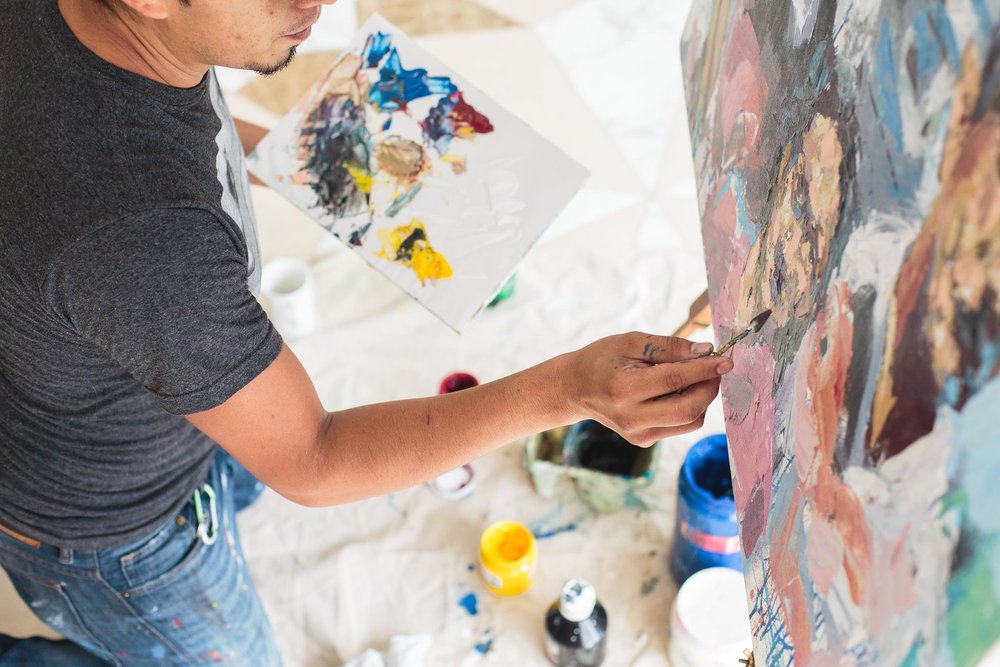
The Technique of Oil Painting
Oil painting is a fascinating technique due to its ease of application and its impact throughout the History of Art. With a long narrative, this technique became extremely admired from the mid-15th century onwards, with Flemish and Dutch artists, due to its versatility in terms of consistency, texture, shine, the possibility of being able to be combined with other oils and still because of the drying time.There were many artists who created true masterpieces, such as the Mona Lisa (1503-1506) Leonardo Da Vinci's Guernica (1937) Pablo Picasso, The born of Venus (1483) – Sandro Botticelli, among others. Interested in oil painting? Learn in this article how to create your own work of art.

Mona Lisa (1503-1506) by Leonardo Da Vinci
How to create oil paint?
If you want to learn how to create your own oil paint, you need:
- pigment powder
- Linseed oil
- two spatulas
- flat glass cup
Oil painting, step by step:
- The first step is to place the powdered pigment on a rigid surface such as glass or marble, arranging this in a small mound with a hole in the center, ie in the shape of a volcano.
- In the center, pour a little linseed oil and mix it with the spatula. It is important to add small amounts of oil depending on the size of the dough.
- To make the mixture homogeneous, crush the pigment well. This will avoid the formation of lumps. This is a simple but steady process. You will quickly have your oil-pigment mixture perfectly integrated.
- Don't forget that each pigment reacts differently, so take notes on your experiences to get the best formula.

What materials do I need to start oil painting?
To paint with oil you need:
- Brushes of different sizes and shapes;
- oil paints;
- Screen;
- Palette;
- Thinners and oils.
The choice of brush type, be it quality, material or format, directly influences the appearance and final strokes of your painting. Oil brushes have long handles but there are several types depending on the artist's convenience. To begin with, three or four good quality flat, round and oval-flat brushes (or filbert, flat brushes with oval ends) are sufficient. Regarding paints, initially it is better to start by buying medium-sized tubes of oil with the primary colors (yellow, magenta and blue), white and natural shade earth - for the shadows (pure black is not necessary in the beginning because it does not mix well with the other colors). This will help you get used to the technique and familiarize yourself with the possible combinations and textures. With time and practice, you can invest and expand your palette with other colors that are interesting and more practical. The pigments must be mixed on a palette, i.e. a large surface, which is easy to clean and light in color. Oil palettes are easy to find in stores, however if you don't want to buy them, you can use large plates, tiles or even a wooden board.
Regarding supports, there are many different ones for oil painting, from canvas, leaves or wood. The key is to make sure that the surface you are going to use is well prepared for oil painting. For beginners we recommend a prepared canvas that you can easily find in an art supply store.
One of the secrets of oil painting is the use of thinners. By using it correctly, you will be able to obtain the desired effects, such as a brighter or matte painting, in addition to other needs, such as making drying faster or slower. However, if used incorrectly, it can jeopardize the quality of your work.

How to start oil painting?
- Start by producing a drawing in a notebook so that ideas flourish. Then develop this sketch on the canvas.
- On the palette put mounds of each color and leave the center for the mixtures. Don't forget to clean your brushes between blends. When using the palette again, arrange the paints again in the same order.
- Discover the various oil painting techniques for your creativity to grow and develop.
For beginners, we recommend starting by painting the background and dark tones. This will offer a sense of volume and depth.The drying of the paint can take a long time, so it is necessary to be careful of the space where it is stored. Positively, due to the delay in drying it is possible to make the necessary changes easily.Don't forget that when you finish your painting, you have to leave it in a safe place and only then apply the varnish, at least one month later so that the paints don't lose their transparency. This technique gives wings to your creativity, observation and tranquility. Discover on P55 several works with the oil technique that can inspire you.
